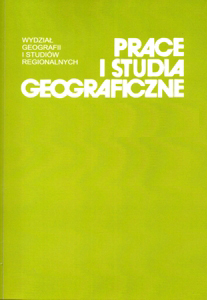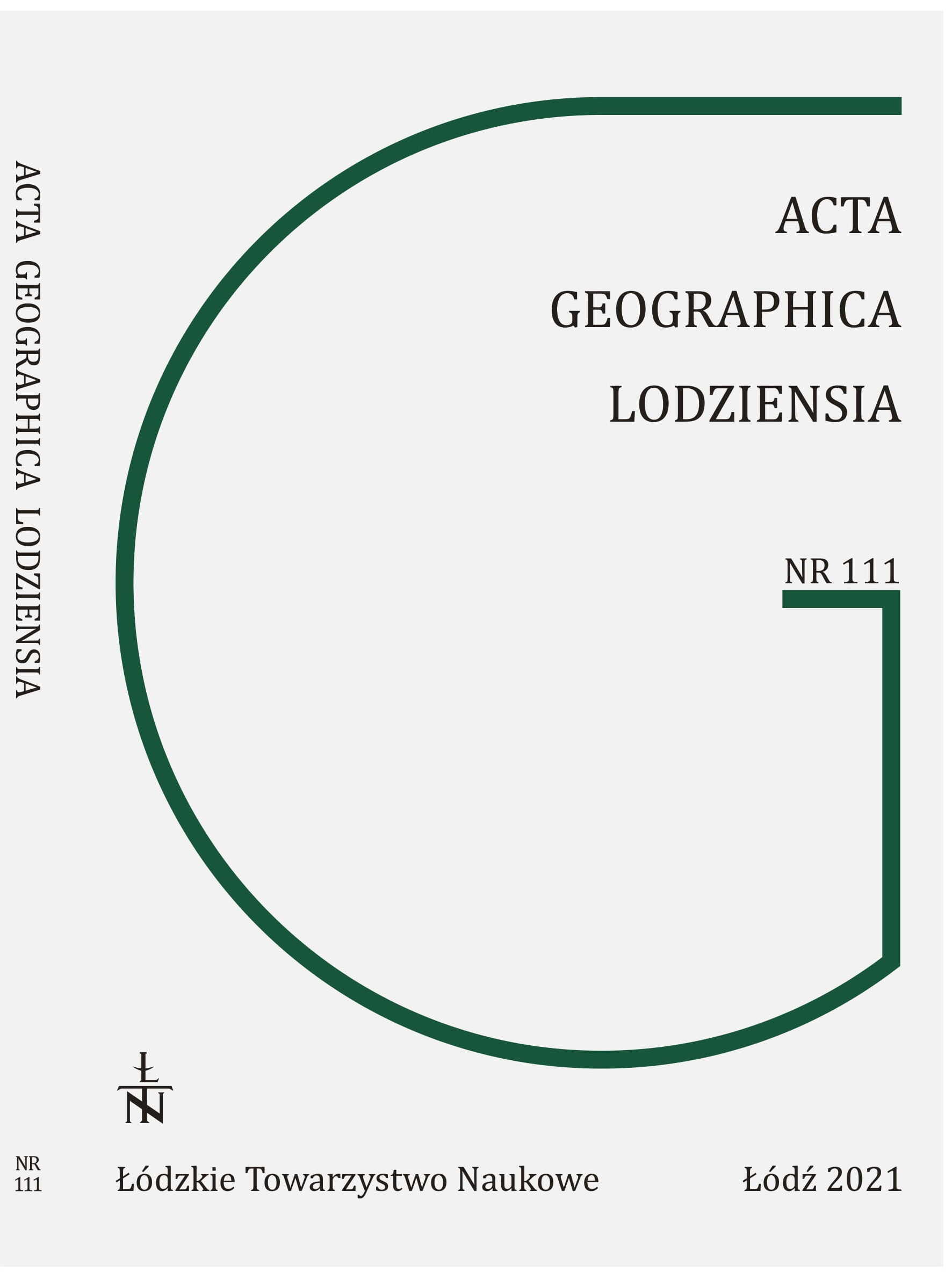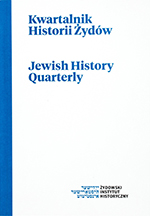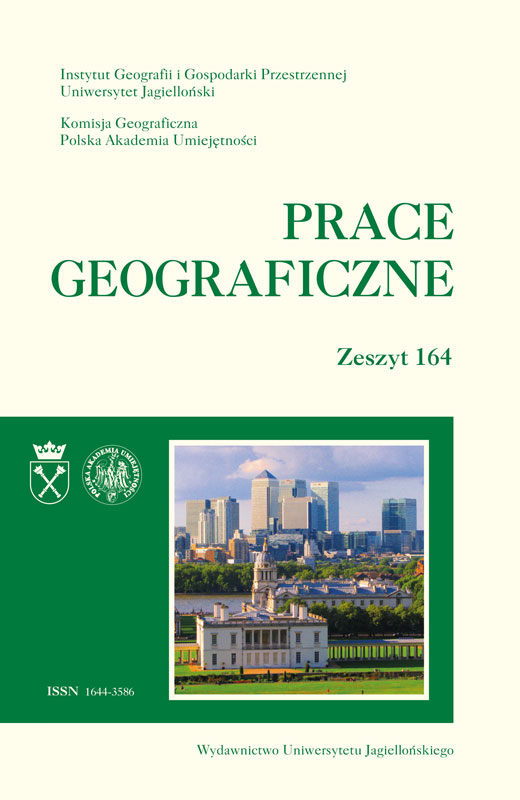
We kindly inform you that, as long as the subject affiliation of our 300.000+ articles is in progress, you might get unsufficient or no results on your third level or second level search. In this case, please broaden your search criteria.



The article describes the nature of the bedrock in areas in the Małopolska Upland where landforms associated with covered karst processes occur. It seeks to find a relationship between geological structure and the potential for covered karst processes to develop. To this end, it includes a review of the literature on the geological structure of three areas in the mesoregions of Wzgór-za Opoczyńskie, Niecka Włoszczowska and Niecka Solecka. Two of the three sites are located in an area of limestone karst, and the third (located in Niecka Solecka) is an area of gypsum karst. All three sites were filled with sediment in the Holocene, but the forms being studied probably formed much earlier. The author also attempts to reconstruct the relief of the Mesozoic surface as digital terrain models. For this purpose, data was taken from geological drillings contained in geological maps of Poland and developed using GIS software. According to digital terrain models in the form of 3D views all three investigated sites are locat-ed in a depressions in the Mesozoic surface (on the slopes or bottom of the basin). That location and low thickness of impervi-ous deposits has caused that migration of underground water, which can affect karstified rocks with increased intensity.
More...
The study attempts to reconstruct the ecological changes recorded in the sediments of a small Olęder pond located on a flat, left-bank floodplain terrace of the Vistula River at a riverbank embraced by the Vistula and its left-bank tributary, the Zagożdżonka River. Archival cartographic materials were used to identify hydrological conditions and their changes caused by the expansion of the hydrotechnical infrastructure since the early 20th century. High-resolution analyses of biogenic sediments collected from the pond allowed the pivotal hydrological changes taking place in this part of the Middle Vistula Valley to be identified. Ecological changes have been reconstructed using palaeoenvironmental analyses, fossil remains of Cladocera, and selected microfossils. Then, these results were correlated with the stages of flood embankments expansion. The conclusions from the study show that the river embankments had a significant impact on changes in ecological conditions in the studied pond.
More...
The research area lies within the Old-Polish Industrial District (OPID), which functioned in recent centuries, where appropriate environmental conditions such as shallow ironore deposits, high forest cover and the availability of hydropower supplied by rivers contributed to the development of mining and metallurgy. This activity led to changes in valley floors and the river n-twork that are visible on historical and contemporary cartographic materials, as well as in the relief and sediments of different origins. This work is a case study of a former waterbody at Furmanów in the Czarna Konecka River valley (Małopolska Upland), where the preliminary analysis of cartographic materials allowed to select the object for detailed research.
More...

The meandering Brzozówka River, a left tributary of the Biebrza River, is located in the Podlasie Voivodship of north-eastern Poland. It flows in a wide, N–S-oriented glacial depression between Goniądz and the Suchowola-Janików Upland. The valley floor is filled with peat. GPR surveys were conducted to recognise the geological structure of the bottom of the depression, determining the peat thickness and the top of its mineral base. The GPR cross-section crossing the Brzozów-ka River valley in an E–W direction consists of 21 echograms with a total length of 3 525 m. Anomalies were recorded at differ-ent levels on the echograms. An undulated top of mineral basement covered by a layer of organic sediments was identified. Several segments of different age and structure can be distinguished within the valley bottom: the Vistulian sandy gravel terrace, the Holocene peat plain (peats lie on the undulated top of mineral sediments, which may be palaeochannel remnants of a Pleisto-cene braided system) and the Holocene alluvia of a meander belt. The last, fluvial segment comprises only 10% of the whole valley bottom width, which allows us to consider the Brzozówka River valley as an underfit valley.
More...
This paper presents the results of a study on the content of lithogeochemical components (organic matter, Na, K, Mg, Ca, Mn, Fe, Cu and Zn) and grain-size composition of mineral matter in the bottom sediments of Morzycko Lake (Myślibórz Lakeland, NW Poland). This lake is large (342.7 ha) and deep (69 m). The catchment has a typical forested character (mainly in the middle part of the Słubia River valley) with agricultural area (mainly in the upland areas north of the lake). The diversity of concentrations of metals was analysed based on 44 samples from 22 representative sites, including surface sediments and sediments from 5 cm below the current lake bed. The results showed that the chemical composition and granulometry of bottom sediments depends on contemporary morphogenetic processes in the catchment of the Słubia River. Geochemical and grain-size indices varied due to changes in biological productivity, intensity of weathering of postglacial material making up the catchment, and potential for migration of metals to the lake with surface or underground runoff. An important aspect in assessing the degree of enrichment of the sediments in trace elements is the location of shallow parts of the lake near the tourist districts of Moryń.
More...
The article discusses the impact of the relief and geological structure of a large river valley on the quality of material in two cores of organic deposits. The location of both sites was highlighted, the relief of the physicographical mesoregion in which the research was carried out and the geomorphology of the immediate surroundings of the sites were characterised, and geological conditions were discussed in more detail. Sequences of changes in Cladocera subfossil fauna at both sites were presented and the obtained record of their transformations was interpreted. Additionally, the results of analyses of five selected physicochemi-cal parameters of the tested organic compositions were considered, and the obtained data were interpreted. It was concluded that the location of the studied cores in the valleys of large rivers had a significant impact on the quality of material analysed, which ultimately affects the certainty with which environmental changes and increasing human impact can be inferred and the reliability with which they can be reconstructed
More...
Mires are common in the landscape of the Kraków-Częstochowa Upland, but they are rarely explored by Earth scientists. In addition to numerous morphological depressions filled with biogenic sediments, mires also occur within river valley, usually upstream from gaps. The intensification of marsh formation within the Białka River valley (left-side tributary of Krztynia, upper Pilica catchment) may have been influenced by the occurrence of poorly permeable, fluvial silty sands in the bedrock. Infilling of the studied depression at Młyny was accomplished via fluvial sedimentation characterised by local aggradation interrupted by carbonate precipitation, and sedentation of autochthonous organic matter. The former sediment type is represented mostly by mineral-organic aggraded silt with a dominant fine fraction, occurring mostly in the basal part of the studied core, and sand fraction in the top interval of the core, superjacent to calcareous-clay gyttja. Ash content reaches up to 87% and Fe concentrations are periodically elevated (30–48 mg/g). Calcium carbonate (CaCO3) also occurs in the studied oxbow mire deposit, exceeding 40% in some intervals, which indicates that a more important part was played by groundwaters in the water balance of the Białka valley. This periods were periodically interrupted due to higher flooding activity and recorded by mineral sediments characterised by specific granulometric composition, and an elevated percentage of organic matter deposited as rhythmists. Elevated concentrations of trace elements noted in a horizon dated at 1885±105 BP by means of radiocarbon dating may point to human impact on the environment due to the adaptation of economy to local conditions. The geochemical record of human activity is corroborated by archaeological data from various parts of the Białka valley catchment. The reason for the concentration of trace elements being highest in the top interval of the studied core is the intense economic development of Silesia-Kraków region, and the associated deforestation, mining and metallurgy.
More...
Identifying ancient shores may provide valuable information concerning sea-level fluctuations and environmental changes, since they serve as a reliable marker of palaeoshorelines. This paper deals with deposits that display features of a nearshore zone. In the Jurkowice-Budy quarry (southern slopes of the Holy Cross Mountains) a sequence of clastic sediments and littoral structures linked to the transgression of the Paratethys Sea in the middle Miocene has been recognised. The discovery of bio-erosional assemblages (borings of lithophags) in Devonian limestone boulders helped to determine the littoral nature of the examined deposits and to layout a palaeocliff wall. The samples of sandy sediments were analysed by sieving procedure and interpreted using statistical parameters calculated by graphic and moment methods. Moreover, morphometric analysis of gravels and analysis of mineralogical composition under binocular microscope were performed. The results showed well-developed beach assemblages composed of pebbles, coarse-to-medium sands and silty sands derived from eroded Cambrian strata (sand-stones) located to the north of the study site
More...
In the Serteyka River valley in western Russia, eight accumulative fans formed at the mouths of ravines were examined geologi-cally and geomorphologically. The test samples were collected from individual geological drillings made with a manual probe, as well as from excavations in the central and distal zones of the fans. Using the Gradistat program, sedimentological indicators were calculated, i.e. mean grain diameter (MZ), standard deviation (sorting – σI), skewness (SkI) and kurtosis (KG),and then particle-size distribution frequency curves, cumulative curves and a Passega C/M diagram were drawn. It has been documented that the grain size of the fan sediments depends on the characteristics of the source material. Analysis of sedimentological indicators (mean grain diameter, sorting, skewness, kurtosis) showed the studied fans deposits to have a large variability of erosion and accumulation conditions. For the deposits of younger fans, the 2nd system of the MZ-versus-σI relationship after Mycielska-Dowgiałło (1995) was distinguished, while for the older, the 2nd, 3rd and 4th systems were recognised. The main process of grain transport within these forms was saltation. The ravines on the eastern slope of the Serteyka valley were most likely created in the periglacial period, while the gullies on the western side of the valley developed in the early modern period.
More...

Several studies indicate that the hot season is lengthening at the expense of the intermediate seasons, and extreme events are becoming more intense and spread out over time. What is the situation in a climate described as very hot? This work aims to examine the evolution of minimum and maximum temperatures in the hot period from June to September during 1951–2010 in the Bechar region, which is classified among the hottest in the world and located in the south-west of Algeria. This study will also focus on the extending of the warm period (the period between the first and the last recording of an extremely hot day). The results showed an evolution of maximum and minimum temperatures, leading to an upward trend in the mid-1990s. There was an average increase of 1°C at the maximum and 0.9°C at the minimum. The warm period experienced a sig-nificant expansion attributed to both the earliest and the latest extremely hot day events
More...
The article is about three small towns that had a large proportion of Jewish inhabitants before World War II and, consequently, a pattern of the local economy in which the businesses owned by the Jews played an important role. The three are Gąbin, a town and commune (gmina) seat located near Płock, Przedbórz, also a town and commune seat in Łódzkie voivodship near the boundary with Świętokrzyskie voivodship, and Włodawa, a county (powiat) seat on the bank of the Bug, near the point where the frontiers of Poland, Belarus and Ukraine meet. Despite the fact that since the end of WWII, Poland’s total urban population increased more than threefold, Gąbin and Przedbórz have not returned to their 1938 population level yet whereas Włodawa’s headcount increased in the post-war period, although this should be attributed to the town’s role as county seat, and since the 1990s that population has been shrinking anyway. In terms of economy, each of the three towns has a dearth of industry and a growing significance of their agricultural role. The three towns also share a relatively unfavorable pattern of education of its residents and a negative appeal to migrants, resulting in a deteriorating demographic structure.The inhabitants of these localities have not been showing a lot of interest in their Jewish heritage. Such interest has only been rising when there is an incentive from the outside, such as visits arranged by some landsmannschaft, a school project launched by some local activist, etc.
More...
Współczesne procesy urbanizacyjne cechują się niezwykłą żywiołowością, której odbiciem są liczne problemy w definiowaniu ludności miejskiej i wyznaczaniu rzeczywistych granic miast. Szczególnie interesujący z naukowego punktu widzenia jest przypadek Chin, gdzie dynamika przekształceń społeczno-ekonomicznych oraz kwestie polityczno--administracyjne mają konsekwencje w skomplikowanej strukturze miejskiej. Poważnym utrudnienie przy wyznaczaniu właściwej liczby chińskiej ludności miejskiej lub określaniu rzeczywistych granic tamtejszych miast jest skomplikowany podział administracyjny, objawiający się nienaturalnym niekiedy rozmiarem miast oraz włączaniem ludności wiejskiej pod miejską jurysdykcję. Ponadto, kwestia podziału społecznego między wsią a miastem, który jest skutkiem istnienia swoistego systemu meldunkowego Hukou, poważnie utrudnia dokładne oszacowanie liczby rezydentów miejskich. Masowa migracja ze wsi do miast, w większości przypadków niepociągająca za sobą aktualizacji Hukou, w przypadku migrantów wpłynęła na brak pełnych i akceptowanych statystyk liczby ludności chińskich miast. Warto również wspomnieć, że ci migranci na obszarach miejskich często stanowią drugorzędną kategorię obywateli doświadczającą tam społeczno-ekonomicznej dyskryminacji, co prowadzi do widocznej i odczuwalnej polaryzacji mieszkańców miast chińskich. [Present urbanization processes are characterized by unusual spontaneity, reflected in numerous problems in defining urban population and determining real city boundaries. Of particular interest, from a scientific point of view, is the case of China, where a considerable dynamics of socio-economic transformations, as ell as political and administrative issues are reflected in a complex urban structure. Serious complications in determining the real Chinese urban population number, or determining real city boundaries are the complicated administrative division, manifested by an unnatural size of the cities, and the inclusion of rural population under their urban jurisdiction. In addition, the question of social duality between the countryside and the city,caused by the Hukou register system, seriously hampers estimations of a city resident number. Mass migration from the countryside to cities, in most cases without updating the Hukou system, resulted in a lack of complete and accepted statistics concerning the population of Chinese cities. It is also worth mentioning, that rural migrants in urban areas are often a secondary category of citizens facing socio-economic discrimination, leading to a visible and tangible polarization among Chinese urban residents.]
More...

This article contains results of studies on the applicability of data from Intelligent Transportation Systems (ITS) for the purposes of geographical studies regarding the spatial mobility of inhabitants within a big city. The article focuses on the option of applying two types of sub-systems – induction loops and automatic number-plate recognition (ANPR) – and includes examples of analyses based on the resulting data, which can serve as a basis for mobility studies. The area on the example of which the capabilities of application of ITS data have been presented is Lodz – a large city in central Poland. The conducted research shows that ITS systems offer an enormous potential in providing data for spatial mobility studies. In order to fully exploit its worth, however, it is imperative to expand the research procedure by including, for instance, the results of qualitative research. Also, the interpretation of results obtained on the basis of ITS data ought to be performed with an awareness of numerous significant preliminary and simplifying assumptions.
More...
Road infrastructure has been identified as a major factor in the development of a nation and where is lacking or inadequate usually creates a memorable hardship for road users. To this end, this study assessed the state of road infrastructure in selected urban centres in Kogi State, Nigeria. Structured questionnaire cum field observation were deployed to collect the required data for the study. The structure questionnaire were administered to one thousand, two hundred and fifteen (1,215) household heads in the selected urban centres to elicit information on the perception of the urban dwellers with the state of road infrastructure. More importantly, Z-Score technique was utilized to show variation in the distribution of road infrastructure in the selected urban centres in Kogi State. Findings revealed that disparity exists in the provision of road infrastructure across the selected urban centres in the study area with the highest Z-Score value of 3.85 in Lokoja and a least Z-Score value of -0.28 in Mopa-Amuro. Findings also indicated that that the respondents (urban dwellers) were dissatisfied with the condition of road network and fairly satisfied with the state of bridge and drainage system, lay-by and walk way, street light, traffic/road sign and parking spaces available in the study area. Having revealed the level of satisfaction of respondents with the physical state of existing road infrastructures and their serviceability, the study recommends that Kogi State government should made concerted efforts to develop and implement standard road infrastructure capacity framework for road construction, rehabilitation and maintenance across the urban centres in Kogi State.
More...
Cost-suitability land modeling is one of the mandatory conditions for the proposal of new transport development projects, in order to achieve optimal costs of design and construction. In the present study, we intend to present a model for assessing land suitability for current and proposed transport infrastructure along the Orient-East Med TEN-T Corridor, in the mountainous region of the Timiș-Cerna Corridor (Romania). The relevant factors for our analysis were outsourced from various thematic data sets and refer to lithology, morphological and morphometrical properties of landforms, soil characteristics and climatic setting of the study area. Conservation of natural environment and human habitat was also taken into consideration by means of analyzing land use patterns and spatial distribution of protected areas. The methodology is based on the principles of cartographic algebra and vector overlay analysis, currently implemented in various GIS applications. The results of our study aim for the identification of critical sectors along the current and proposed transport infrastructure, which intersect areas with high development cost and low suitability. Starting from our observations, specialists in transport networks and spatial planning could make use of dedicated computation algorithms to identify and describe optimal routes for future infrastructure projects that would connect the southern and western parts of the country.
More...